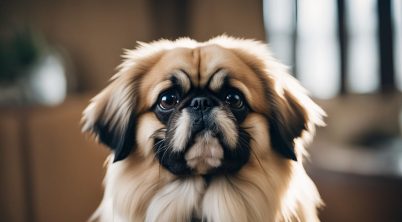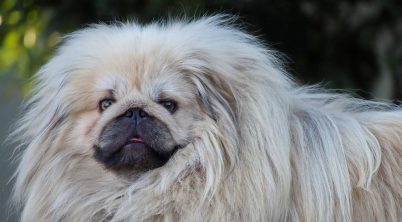Essential Tips for a Healthy Dog
Pekingese dogs, known for their regal appearance and compact size, make endearing companions. As with all dogs, exercise plays an essential role in maintaining their health and well-being. However, due to their unique physical attributes and lower energy levels, Pekingese exercise needs differ from those of larger, more active breeds.
Beginning as early as three months of age, Pekingese puppies can participate in short, 10-minute leashed walks. As they mature, adult Pekingeses typically require about an hour of physical activity per day. This could include two moderate walks of 15 to 20 minutes each, in addition to a prolonged play session.
It is important for Pekingese owners to strike the right balance when it comes to exercise. Taking certain precautions, such as being mindful of the dog’s distinctive rolling gait and susceptibility to heat, will help ensure that a Pekingese stays healthy and happy while enjoying physical activities.
Pekingese Exercise
Physical Activity
The Pekingese is a small toy breed that requires moderate physical activity to stay healthy and happy. However, due to their shortened snout and potential for difficulty in breathing, it is important to maintain a gentle exercise routine.
Exercise Needs
Pekingese dogs generally require about an hour of physical activity per day. This can be divided into shorter exercise sessions, such as two 15- to 20-minute walks and a prolonged play period. Keep in mind that Pekingese dogs have a low energy level and may not be as active as other dog breeds.
Daily Walks
It is advisable to take your Pekingese on short, 10-minute leashed walks as early as three months of age. Remember to keep the pace leisurely to prevent the dog from overheating or having difficulty breathing.
Long Walks
If you decide to take your Pekingese on longer walks, it is recommended to limit those to a moderate pace and duration. Due to their risk of respiratory issues, it is essential to ensure that your Pekingese does not become too tired or overexerted.
Fetch
Playing fetch with your Pekingese can be an enjoyable activity for both you and your pet. However, it’s important to throw the toy gently and slowly, allowing the dog to play without getting exhausted or having difficulty breathing.
Rolling Gait
The unique rolling gait of Pekingese dogs can impact their exercise routine. The short legs and compact bodies cause the Peke to walk with a distinctive waddle, which may require you to adjust your walking speed when accompanying your dog on walks. Keep in mind that the Pekingese gait can affect how long and strenuous their walks should be.
Closing Summary
The Pekingese breed is well known for its distinctive appearance and loyal nature. However, their exercise requirements differ from other breeds, given their small size and brachycephalic facial structure. A healthy Pekingese typically requires about an hour of physical activity per day. This can be achieved through two moderate 15-20 minute walks and a prolonged play period at home.
It is essential to exercise a Pekingese with care, considering their susceptibility to breathing problems. Due to their brachycephalic facial structure, they may exhibit noisy breathing or snoring when inhaling, which can indicate an obstructed upper airway. If not addressed properly, this can lead to more severe respiratory issues.
Pekingese puppies can be introduced to leashed walks for short durations, around 10 minutes, from the age of three months. As they grow into adulthood, it is crucial to gradually and responsibly increase their exercise routine. Additionally, make an effort to engage them in diverse activities, such as interactive toys and mental stimulation games, to maintain their overall well-being.
When exercising a Pekingese, bear in mind that they are prone to overheating, so avoid exercising during the hottest parts of the day. Choose a cooler time, like early morning or evening, for outdoor activities. Ensure access to fresh water and shade, and be prepared to take breaks if the dog starts exhibiting signs of discomfort or fatigue.
In summary, providing proper exercise for a Pekingese should center around their unique physical characteristics and needs. By creating a balanced routine that includes both physical activity and mental stimulation, you can help ensure a healthy, happy, and well-rounded companion in your Pekingese.








